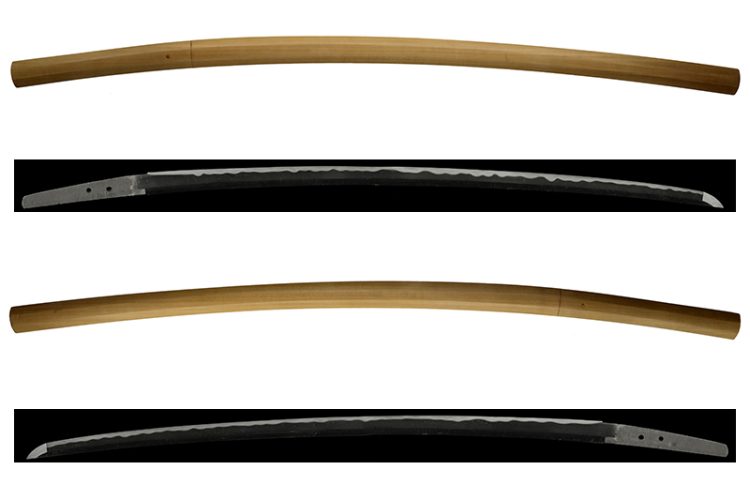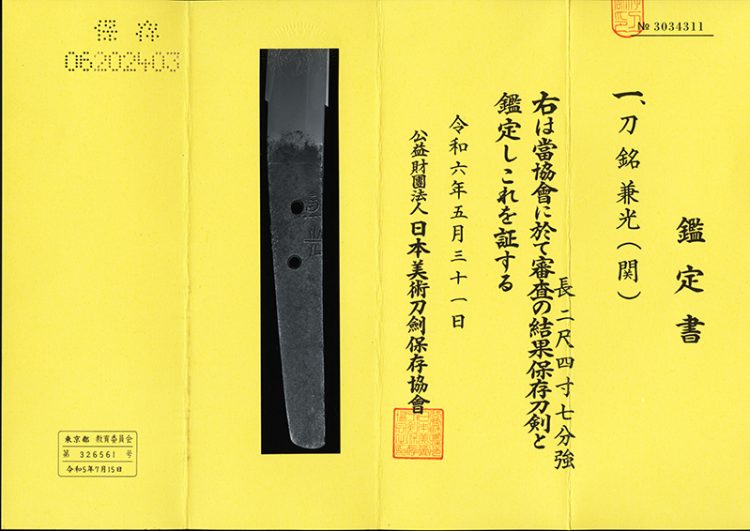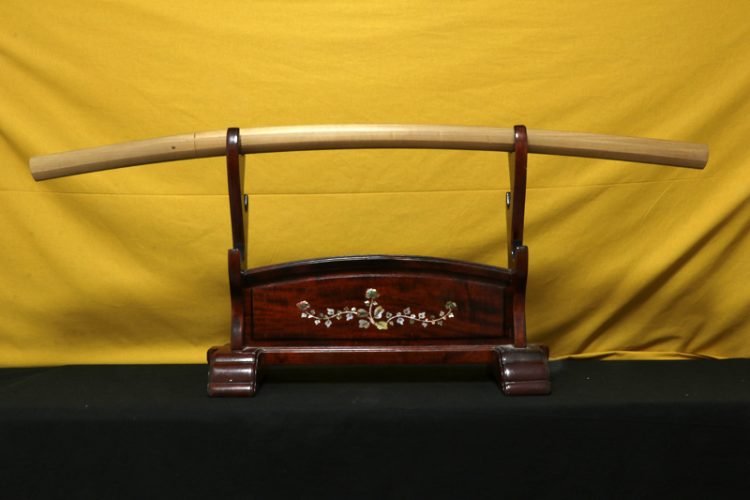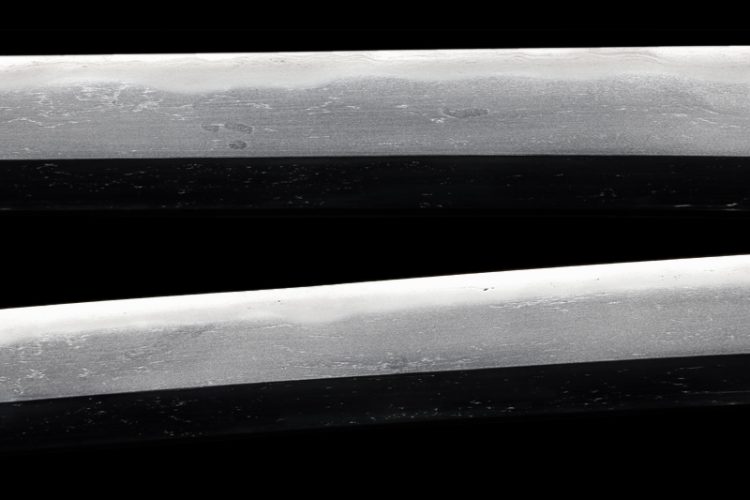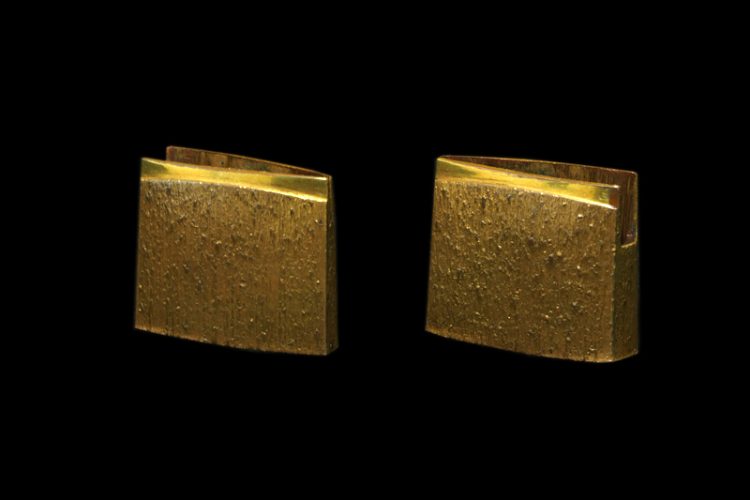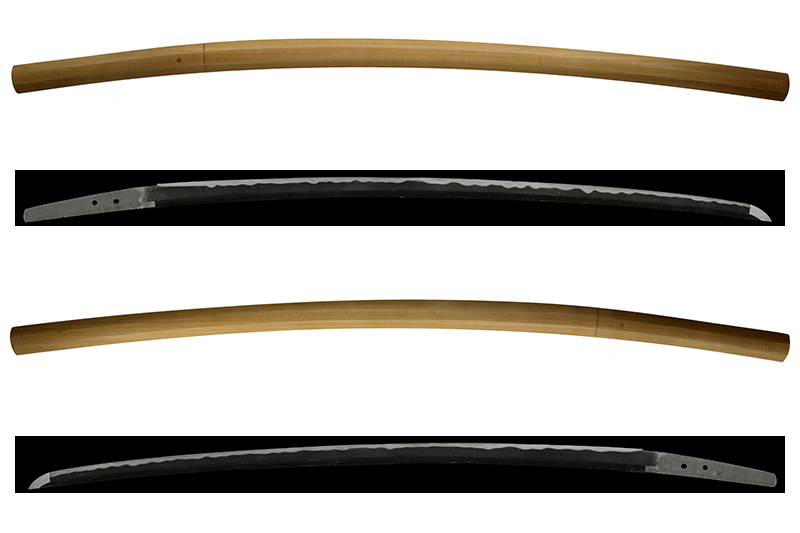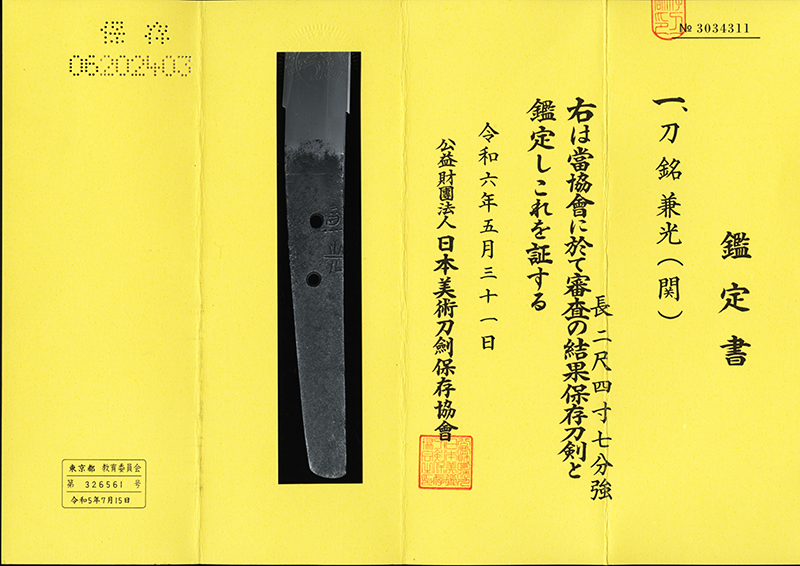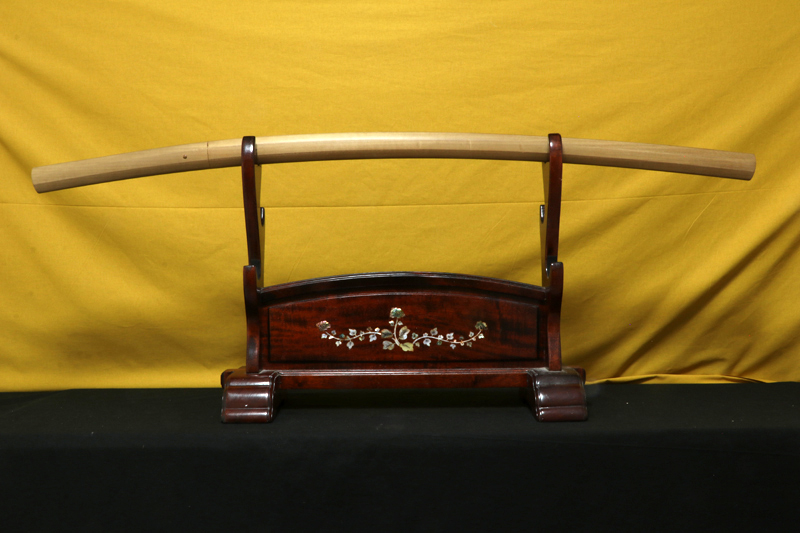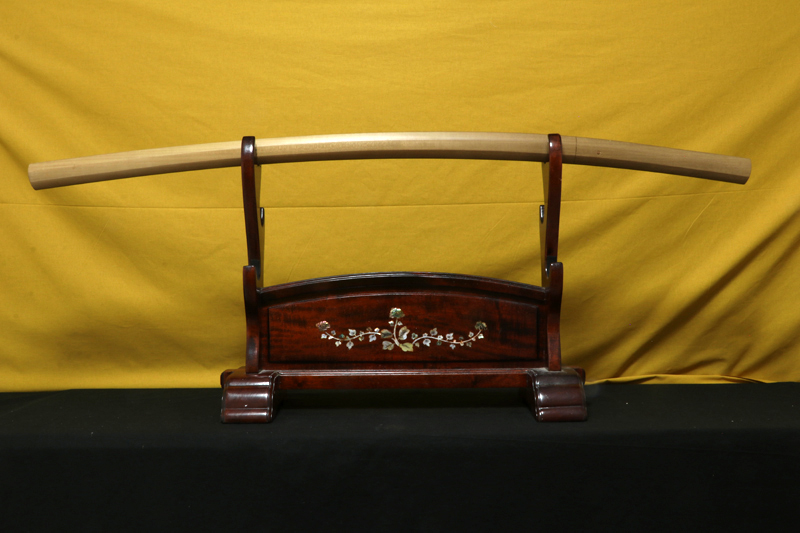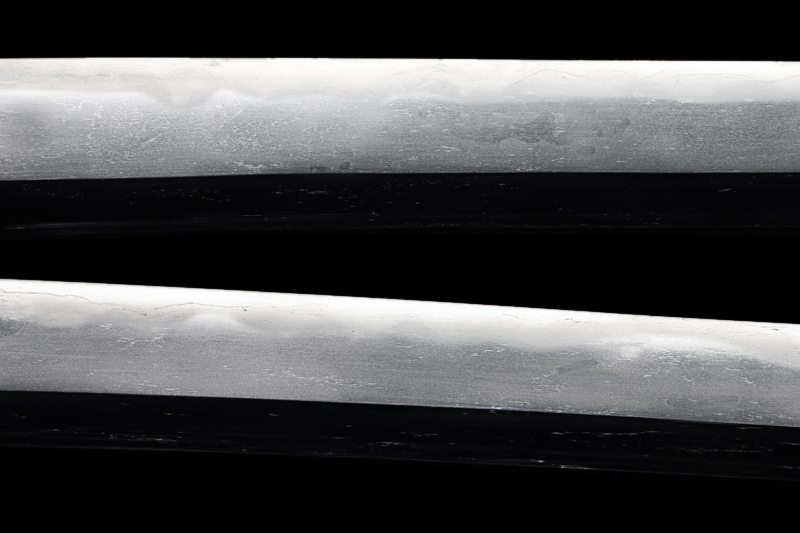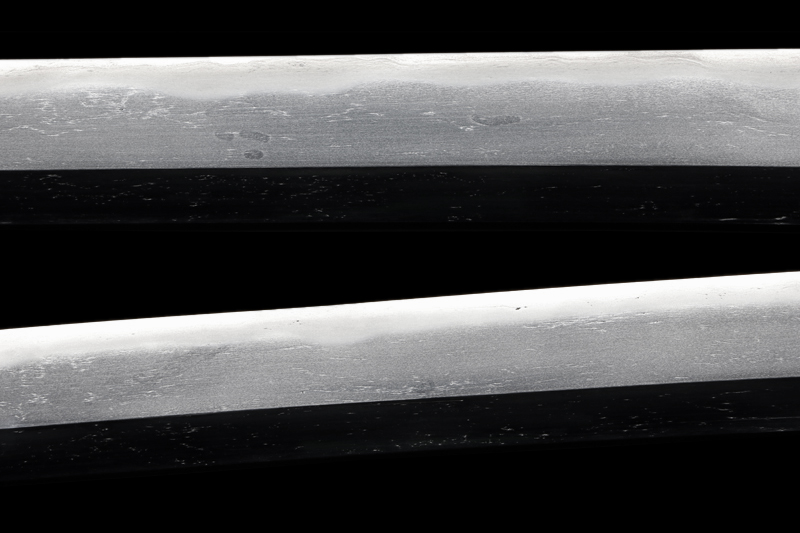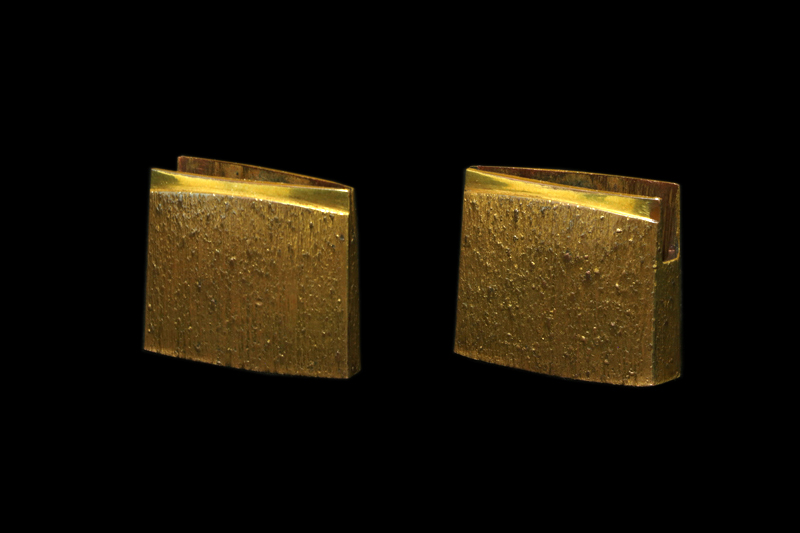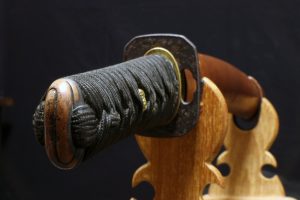説明
「体配 style」
鎬造り庵棟、身幅重尋常、鳥居反り中鋒。茎は生で桧垣鑢がかかり、茎尻は栗尻。
「地鉄 jigane」
地鉄は板目肌が流れ柾かかり、肌白気て墨肌が現れる。
「刃紋 hamon」
刃紋は互の目乱れ、尖り刃を交え、刃縁砂流しかかり、刃中は金筋が入る。釯子は乱れ込み小丸に返る。
「特徴 detailed」
関の兼光は、室町初期の新関鍛冶を代表する刀工である兼光にその起源を持ちます。初代兼光は、大和国の手掻包永の三男であり、古関(こせき)鍛冶である金行の娘婿でした。右衛門尉の称号を持ち、最初は「包光」と銘を刻んでいましたが、関に移住後「兼光」に改名したと伝えられています。兼光の系譜は応永の初代から始まり、嘉吉、文明、天文と続き、新刀期にまでその伝統が引き継がれました。
本作は、天文時代の四代目兼光の作とされ、武士の太刀として使用されていたものと思われます。
この刀に拵を付ければ居合で使用できます。刀身に合う既成品の新品鞘を弊社は持っており、鍔、縁頭、目貫、切羽、鮫革を調達して柄を作れば拵が完成します。費用は10万円ほどになります。
Kanemitsu of Seki traces its origins to Kanemitsu, the representative swordsmith of the Shin-Seki school in the early Muromachi period. The first-generation Kanemitsu was the third son of Tegai Kanenaga from Yamato Province and the son-in-law of Kaneyuki, a Ko-Seki swordsmith. He held the title of Uemon-no-jo and initially signed his works as Tsunemitsu, but after moving to Seki, he changed his name to Kanemitsu. The Kanemitsu line began with the first generation in the Oei era, followed by successive generations in the Kakitsu, Bunmei, and Tenbun eras, continuing into the Shinto period.
This particular piece is believed to be the work of the fourth-generation Kanemitsu from the Tenbun era and was likely used as a samurai tachi.
If koshirae is added to this sword, it can be used for iaido. Our company has a prefabricated new saya that matches the blade, and by sourcing a tsuba, fuchi-kashira, menuki, seppa, and samegawa to make the handle, the koshirae will be complete. The cost would be around 100,000 yen.
「拵 Koshirae」
鞘(saya) :白鞘
ハバキ(habaki) :素銅地一重ですが、元々金着だったのを剥がされたのだと思います。
「刀剣の状態 condition of blade」
研:良好です。
傷:欠点に成るような傷は有りません。
